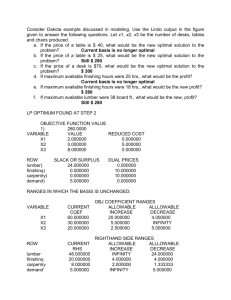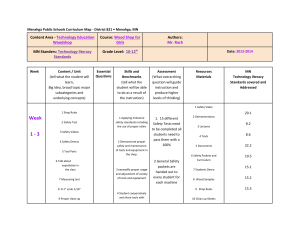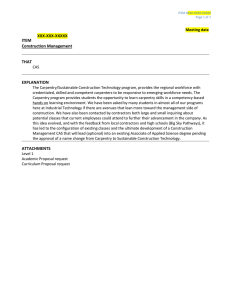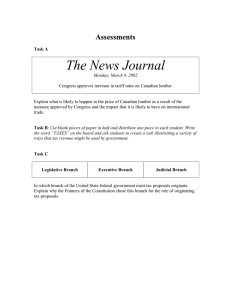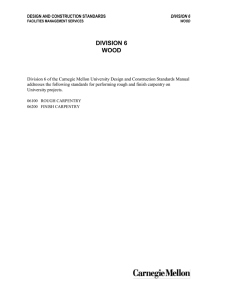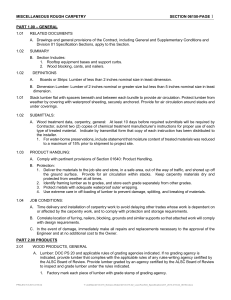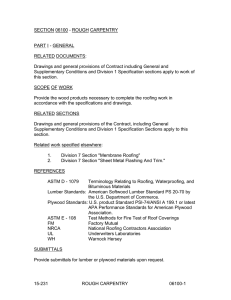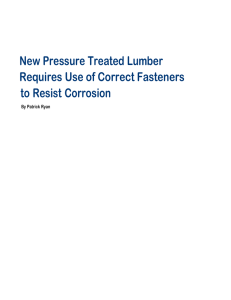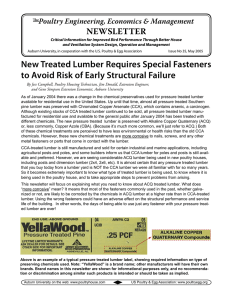Maui Community College Course Outline 1. Alpha and Number:
advertisement
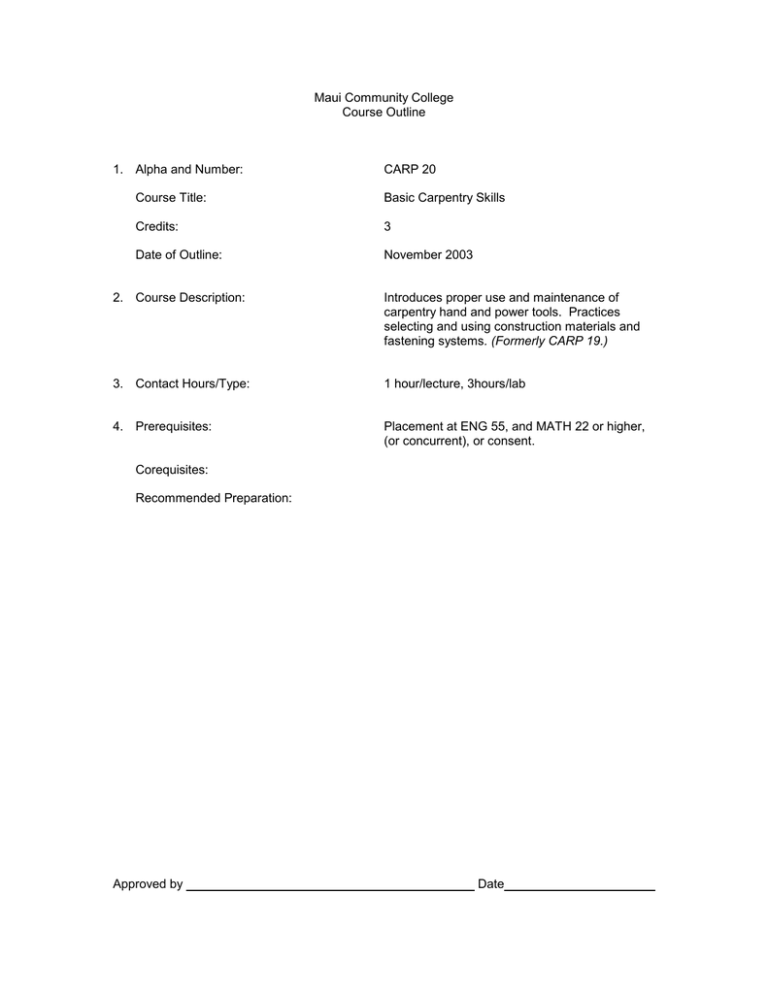
Maui Community College Course Outline 1. Alpha and Number: CARP 20 Course Title: Basic Carpentry Skills Credits: 3 Date of Outline: November 2003 2. Course Description: Introduces proper use and maintenance of carpentry hand and power tools. Practices selecting and using construction materials and fastening systems. (Formerly CARP 19.) 3. Contact Hours/Type: 1 hour/lecture, 3hours/lab 4. Prerequisites: Placement at ENG 55, and MATH 22 or higher, (or concurrent), or consent. Corequisites: Recommended Preparation: Approved by Date 2 5. General Course Objectives This course is designed to teach practical skills and safe use of basic carpentry hand tools, power tools, and building construction materials and fasteners. Students will develop an awareness of the proper safety practices and attain appropriate skills in the use of carpentry hand and power tools, and in the selection and use of building construction materials and fasteners. 6. Specific Course Objectives, Competencies, and Student Learning Outcomes For assessment purposes, these are linked to #7. Recommended Course Content. On successful completion of this course, students will be able to: a. b. c. d. e. f. g. h. i. j. k. l. m. n. identify and describe the hand tools the carpenter commonly uses; use hand tools in a safe and appropriate manner; maintain hand tools in suitable working condition; state general safety rules for operating power tools; describe and safely use the following: circular saws, saber saws, reciprocating saws, drills, hammer-drills, screw-drivers, planes, routers, sanders, staplers, nailers and powder-actuated drivers; describe and adjust table saw and power miter saw; using safe practices crosscut lumber to length, rip to width, and make miters using the table saw; using safe practices crosscut lumber to length making square and miter cuts using a power miter saw; define hardwood and softwood and give example of common species of each; state the grades and sizes of lumber commonly used in building construction; measure linear footage and compute square footage and board foot measure; describe the composition, kinds, sizes, and several uses of: plywood, oriented strand board, particleboard, hardboard, medium density fiberboard, and softboard; describe the uses and sizes of: laminated veneer lumber, parallel strand lumber, laminated strand lumber, wood i-beams, and glue laminated beams; name, describe, and select for proper use: nails, screws, lag screws, bolts, solid wall anchors, hollow wall anchors, and adhesives. 7. Recommended Course Content and Approximate Time Spent on Each Topic Linked to # 6. Student Learning Outcomes. 1 session Introduction to the course syllabus including a discussion of course materials, projects, field trip schedule, tools and personal safety equipment required. 2-4 weeks Hand tools (a-c) 3-5 weeks Power Tools (d-h) 2-4 weeks Fasteners, wood and wood products. Field trip (i-n) 4-6 weeks Projects and/or field experience (a-n) 8. Text and Materials, Reference Materials, Auxiliary Materials and Content 3 Appropriate text(s) and materials will be chosen at the time the course is offered from those currently available in the field. Examples include: Field guides and reference books: DBEDT, AIA 2001 Field Guide for Energy Performance, Comfort, and value in Hawaii Homes DBEDT 2000 Guide to Resource-Efficient Building in Hawaii Vogt, Floyd and Lewis, Gaspar 3rd Edition 2001 Carpentry Haun, Larry, How to Build a House, Tauton Press/Habitat for Humanity Text materials: Vogt, Floyd, Residential Construction Academy 2003 General reference materials, other field guides, and videos should be made available in the Open Reserve Room at the MCC Library. 9. Recommended Course Requirements and Evaluation Specific course requirements are at the discretion of the instructor at the time the course is being offered. Suggested requirements might include, but are not limited to: 10 –50% Written quizzes, midterm(s) and/or a final exam covering lectures, discussions, lab activities, field trips, guest speakers, and reading assignments 5–30% Lab practical exams and projects 10–30% Attendance and punctuality 10–20% Laboratory and field skills 10. Methods of Instruction Instructional methods will vary considerably with instructors. Specific methods will be at the discretion of the instructor teaching the course and might include, but are not limited to: a. b. c. d. e. f. g. h. i. quizzes and other tests with feedback and discussion; field and lab practical exams and species identification; lectures and class discussions; problem solving; narrated 35-mm slide and/or PowerPoint presentations; videos, DVDs, CD-ROMs with detailed viewing guide and discussion questions; lab activities including, lab skill lessons, data analysis, and other activities; field trips including field notes, observations, and construction activities; guest speakers and attendance at public lectures.
